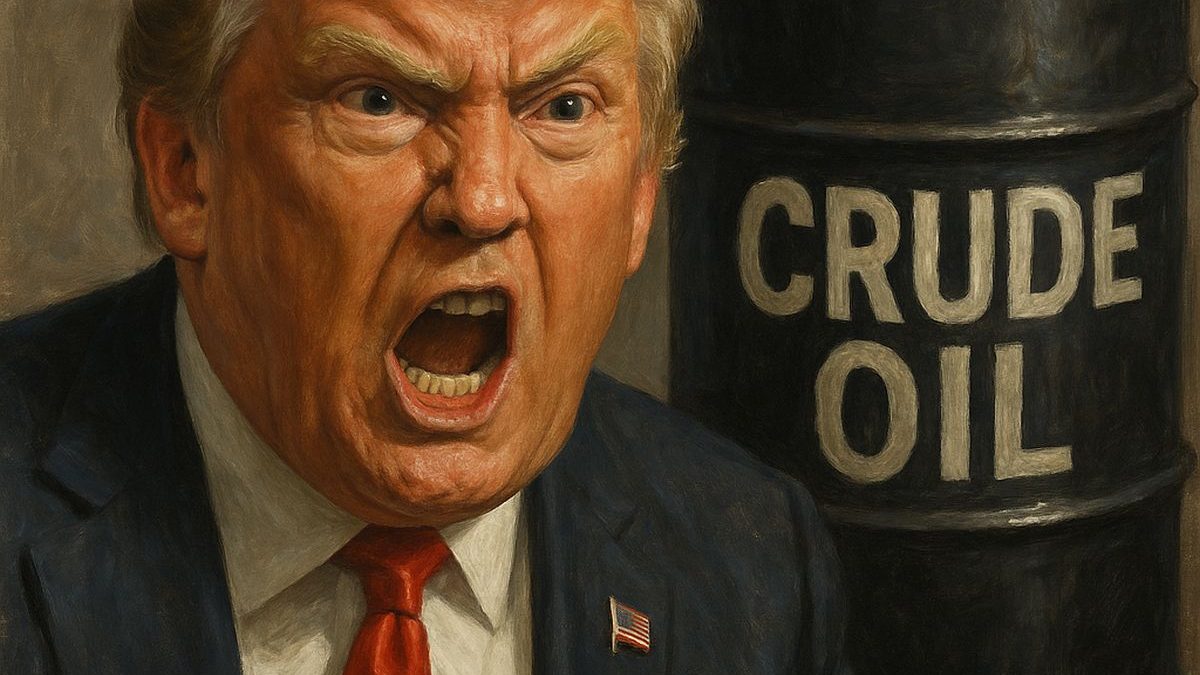Immediately after Trump took office as the President of the United States for the second time in January this year, he proclaimed “Drill, baby, drill” as one of the top agendas of his administration.
The Republican vowed an oil drilling boom that he claimed would make the US more “energy independent” and lower voters’ spending at the gas station.
The price of oil has indeed tanked, and drilling has increased somewhat…in parts of the world that are not the US, that is.
The “Drill, baby, drill” that is keeping oil prices low has got to do way more with actions being taken by the Organisation of Petroleum Exporting Countries and its allies (OPEC+) than Trump.
OPEC+ on Sunday (August 3) concluded a two-year drive to restore oil output that had been slashed during the pandemic-era demand collapse. But instead of clarity for markets, the group has left traders navigating a thicket of uncertainty, and prices under mounting pressure.
The latest decision, a 547,000 barrel-a-day increase, reverses the final segment of the bloc’s 2023 voluntary cutbacks. It completes, one year ahead of schedule, a strategic pivot by Saudi Arabia and its allies toward reviving lost market share. Yet another 1.66 million barrels per day remain idled and are unlikely to return before late 2026, unless OPEC+ changes course.
The move follows months of softening oil prices, driven not only by the bloc’s aggressive production policy but also by a broader resurgence in global supply, particularly from non-OPEC producers. In North and South America, output gains are reshaping market dynamics in ways that neither Riyadh nor Moscow can fully control.
Impact Shorts
More Shorts“The group is still threading a fine needle,” Jorge Leon, senior vice-president at Rystad Energy and a former OPEC official, was quoted as saying by Bloomberg . “On one side, there’s Trump’s pressure on prices. On the other, there’s the cohesion of the alliance to consider , particularly as the Russia-Ukraine conflict complicates every equation.”
America’s silent surge
Though US President Donald Trump has taken credit for easing oil prices, the reality is more complex. According to analysts at the International Energy Agency, US production has steadily crept upward in 2025 despite tepid economic signals and a cooling labour market.
This expansion , along with growing output in Brazil and Guyana , has contributed to what the IEA projects as a fourth-quarter global surplus of 2 million barrels per day. Brent crude, the international benchmark, has fallen 6.7 per cent since January, to just above $70 per barrel. Goldman Sachs expects a further slide toward $60, levels well below what Saudi Arabia needs to balance its budget.
At the same time, Trump’s renewed trade war and tariff escalations have dampened demand expectations. The twin impact , higher supply and slower growth , has weighed on futures, leaving OPEC+ in a quandary over whether to keep pumping or pull back again.
Market share versus market stability
In theory, the group could now pause. A meeting scheduled for September 7 may serve as a checkpoint, particularly if weak macroeconomic data continues to weigh on demand. Analysts at JPMorgan and Goldman Sachs expect a production freeze rather than another boost. Several crude traders surveyed by Bloomberg also predict a cautious holding pattern.
But Saudi Arabia’s ambitions may not align with that view. “Ultimately, market share is now the name of the game.” said Harry Tchilinguirian, research chief at Onyx Capital Group. “The Saudis won’t want to sit on spare capacity if others are capturing customers.”
This calculus is especially salient given mounting diplomatic friction between the US and Russia. Last week, Trump threatened secondary sanctions on Moscow’s oil buyers, in an effort to force a ceasefire in Ukraine. In response, Russian Deputy Prime Minister Alexander Novak travelled to Riyadh for a rare meeting with Saudi energy minister Prince Abdulaziz bin Salman , a gesture meant to reinforce unity under pressure.
Yet the optics belie the deeper tension. If the US moves to isolate Russian crude further, Riyadh may find itself torn between alliance loyalty and an opening to expand its own sales , even at the cost of further undercutting prices.
A tough ropewalk for OPEC+
“We can expect the group to adopt a wait-and-see approach for at least the first several months,” said Greg Brew, senior analyst at Eurasia Group. “But if there is a contraction in US supply, and if demand growth and the general macro environment remains favorable, I think further unwinding of cuts should be expected.”
For now, the group appears to be betting that the oil market will tighten again in 2026, when the remaining 1.66 million barrels per day could be reintroduced under more favourable conditions.
Trump’s tariffs may have accelerated the downward price spiral, but the more durable forces keeping oil under $75 are structural: supply growth in the Americas, a cooling Chinese economy, and OPEC’s own shift toward short-term tactical moves.
)